On February 27, 2025, PanNature conducted an evaluation of the…
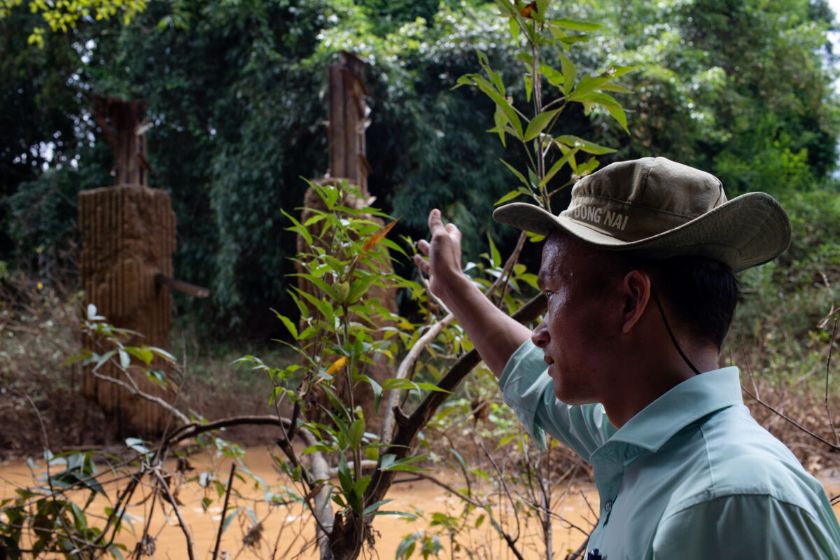
New Freeways a Highway to Hell for Vietnam’s Forests
Vo Quang Trung, 34, talks passionately about how intelligent and playful the baby elephants are in Ma Da forest in the Dong Nai Nature-Culture Reserve, 100 kilometers northeast of Ho Chi Minh City.
“There are about 20 wild elephants here, the only area [in the country] where there are purebred Vietnamese elephants because the forest does not border any country,” said Trung, the reserve’s botany expert.
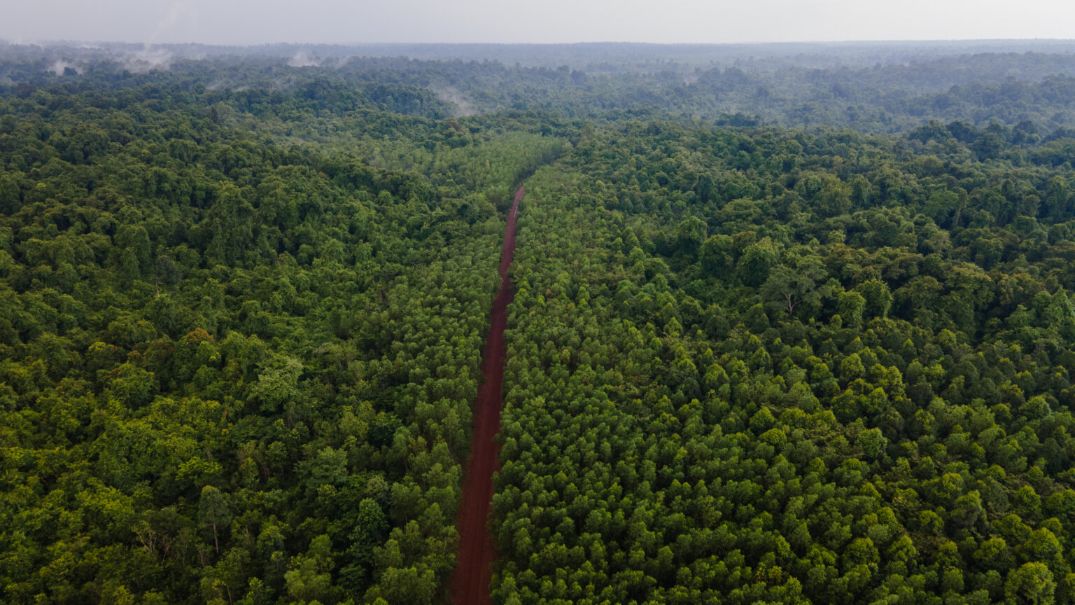
However, the future of Trung’s beloved Ma Da, like that of other forests across the country, is threatened by new highway projects. In March, the government of Binh Phuoc province, where part of Ma Da forest is situated, petitioned Prime Minister Pham Minh Chinh to allow the construction of a highway through the forest’s core, meaning 44 hectares of the reserve would have to be levelled.
As part of its post-pandemic economic recovery policy, Vietnam is using the state budget for infrastructure as “capital bait,” or a fiscal stimulus, to attract more private investment. With 1,900km of roads in the pipeline, estimated to cost VND500 trillion (US$214.5 billion), it would be the largest amount the country had ever spent on such projects, the government’s news portal said.
But experts are warning of the irreparable environmental and ecological damage such projects could do as many of the roads are planned to run through forests.
The proposed highway through Ma Da, which is part of a UNESCO-recognized biosphere reserve, is also seen as illegal.
“Without the intervention of UNESCO, Vietnam already has full legal regulations to protect the natural environment, but the law enforcement is often not very effective,” said Nguyen Hoang Tri, chairman of the National Committee for the Man and the Biosphere Programmes under UNESCO.
“It [the project] shouldn’t even be an idea, let alone be considered,” Tri added.
Saving Ma Da
As Trung walked through Ma Da, the primeval forests of Vietnam’s southeast gradually came to life through his words.
“The reserve spans more than 100,000 hectares. If you’re lucky, you might catch a herd of gaurs drinking water in the grasslands … That’s a grouse … There’s also a Javan bird.”
“The previous generation staff at the reserve did everything to protect the forest ecosystem,” said Trung of his past colleagues, many of whom shed blood because of attacks by armed illegal loggers. “Now my colleagues and I continue this tradition.”

Dong Nai authorities closed the Ma Da forest to loggers in 1996, a tough decision given the difficult economic situation at the time. The reserve’s management board said the move was critical and aimed at protecting rare and endangered species, as well as preserving and restoring many areas that had been destroyed during the Vietnam War and its aftermath.
Dong Nai province’s actions were pioneering. It was not until 2016 that the government ordered a nationwide native logging ban.
Still, over the past 20 years, Ma Da has faced an uphill battle against state-licensed economic development projects, as roads and bridges were proposed to run through the forest but then shelved.
Now the home to thousands of animals and plants is once again under threat. Binh Phuoc authorities want the highway to run for 40km across Ma Da because it would shorten the route from the province to the country’s largest international airport now under construction and a deep-water seaport by 60km.
The shortcut, which local media likened to the Panama Canal, is expected to open up economic opportunities not only for Binh Phuoc but for the entire southern region.
After surveying the Ma Da area, Prime Minister Pham Minh Chinh has yet to make the final decision on the forest’s fate. Instead, he reiterated that the highway should be built “in the shortest possible time, most efficiently, with minimal site clearing and least negative impact.”
With that in mind, he asked the Ministry of Transport, the authorities of Binh Phuoc, Dong Nai, and relevant agencies to discuss and agree on the planned route.
The management board of the reserve has vehemently opposed the project from the start. It would “divide the ecosystem, causing loss of the continuity and linkages of biodiversity corridors,” the board said. “Animals would lose their habitats and be more at risk due to highway traffic.”
“Illegal loggers and hunters are more and more sophisticated and aggressive and the road will make it easier for them to go in and out of the forest to hunt and trap rare animals,” Trung told Mekong Eye. “The reserve does not have enough human resources to arrange checkpoints to monitor the 40km stretch.”
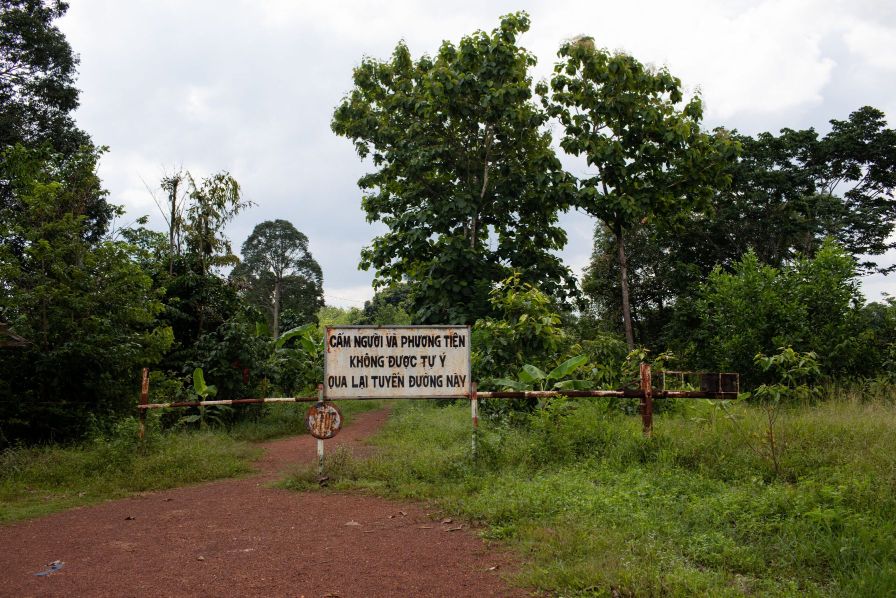
Expressway toll
Ma Da is not alone. At the beginning of July, after the devastation from abnormal floods in the middle of this year’s dry season hit the Central region, all the members of the National Assembly Standing Committee agreed to erase more than 1,000 hectares of forest for the north-south expressway.
The committee, however, does not have the authority to make these decisions, according to the forestry law, but the National Assembly (NA) does. Instead, late last year, pressured to complete key national projects as fast as possible, the government asked the NA to authorize the committee, which is a lower-level authority, to evaluate plans for forest clearance.
Mekong Eye has contacted the Ministry of Natural Resources and Environment but did not receive any responses at the time of writing.
Experts warn that taking rushed decisions to clear forests along the central coast for the expressway could have devastating effects on the region’s ecology and people.
The provinces where the expressway will pass through have suffered the greatest forest loss nationwide in recent years, according to Global Forest Watch data. They are also the places that suffer the most from typhoons, floods, frequent landslides and droughts in Vietnam.
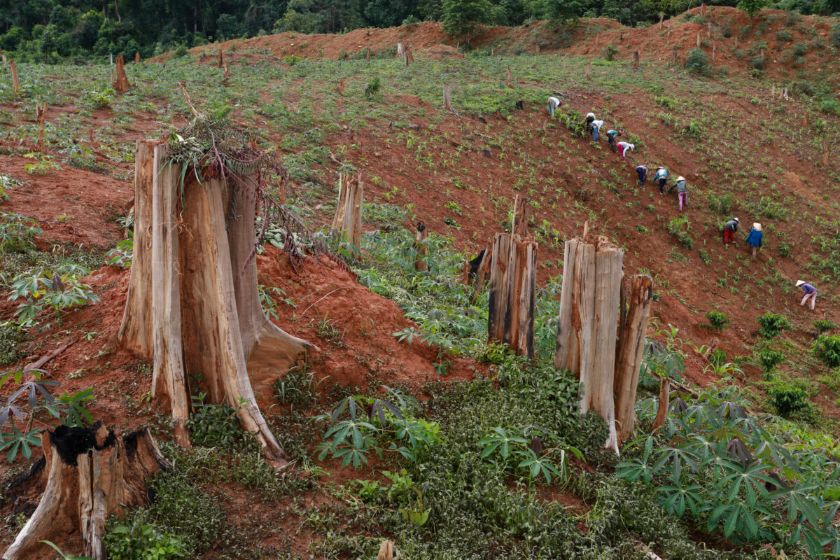
It is important to recognize Vietnam’s need for the north-south expressway. It will reduce logistics costs, which are higher than the global average, said Phung Duc Tung, Director of the Mekong Development Research Institute.
But it should also be emphasized that the area is highly sensitive to climate change, he added.
“We need independent and thorough environmental impact assessments of projects that affect the ecology of this region,” Tung told Mekong Eye. “The Covid-19 pandemic has shown that people from the Central region have very low resilience against risks and disasters due to their economic constraints. Another environmental change here means another burden on their shoulders.”
Roads could be the starting point of forest degradation, forest policy and nature conservation expert Nguyen Hai Van has warned, adding that the actual forest loss may exceed the estimates in environmental impact assessment reports.
The livelihood of many local households in central Vietnam depends on plantation forests that are set to be leveled for the expressway.
“Losing land while there is no alternative livelihood may lead to the risk where these locals are made ‘land- hungry’ and they will continue to encroach on natural forests to find arable land,” Van, a senior research fellow at the Institute of Geography and Sustainability of the University of Lausanne (Switzerland), warned.
“Vietnam’s reports on environmental impacts have not been able to fully account for these cumulative indirect impacts and consequences.”
According to the General Department of Forestry, on average, Vietnam lost 2,430 hectares of forest every year during 2016-2020. From 2012 to 2017 alone, the area of natural forest lost due to land ceding to licensed projects accounted for nearly 90% of the total forest area lost, nearly nine times higher than illegal deforestation.
Deforestation from approved projects also appears to be on the rise. Data from the Ministry of Agriculture and Rural Development show that in 2012-2017, 38,000 hectares of forests were lost due to development projects.
But in 2017-2020 alone, the area of forest approved for conversion to other forms of land nearly doubled to 60,000 hectares.
Many of these projects are in the fields of transport infrastructure, hydropower, and tourism.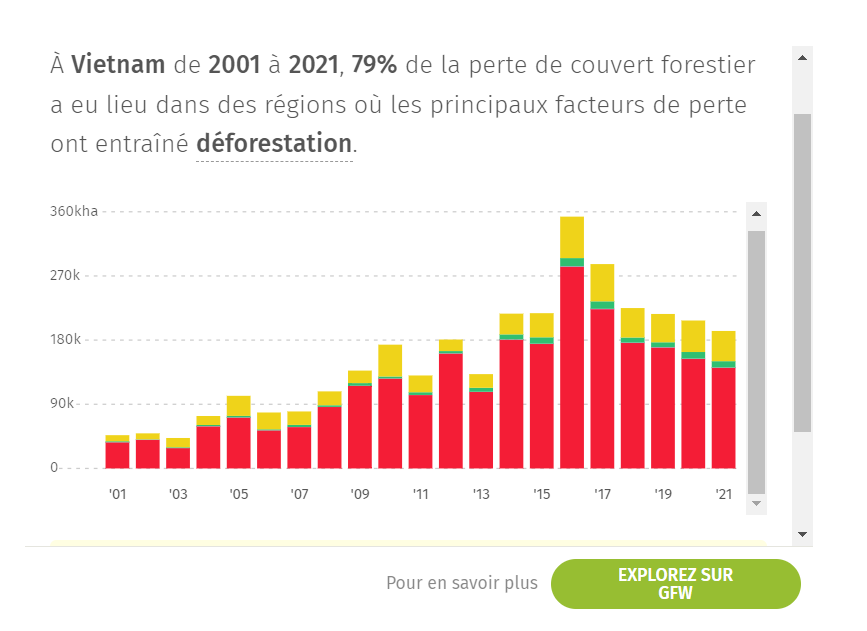
The failure of afforestation
Legally, it’s the duty of the project investors to replant the cut-down forest or to pay the state’s afforestation fund. However, whether new trees will be enough to make up for the loss of nature is not certain.
“It’s too far-fetched to think that new trees can replace lost forests,” said Ngo Van Hong, a forestry expert and director of the Center for Indigenous Knowledge Research and Development.
Most of the afforestation projects have failed. Many seedlings died due to being unsuitable to local soil and a lack of care. It is common for investors and local authorities to replant acacia and eucalyptus, which are not native trees and are poor at retaining soil and water.
Additionally, since it is difficult to find large enough plots of vacant land, the new planting areas are often scattered, so it is impossible to form forests.
“The investor and local authorities should have coordinated with organizations with expertise in afforestation to do this,” Hong suggested. “The government also needs to be more open for people and social organizations to participate in project supervision.”
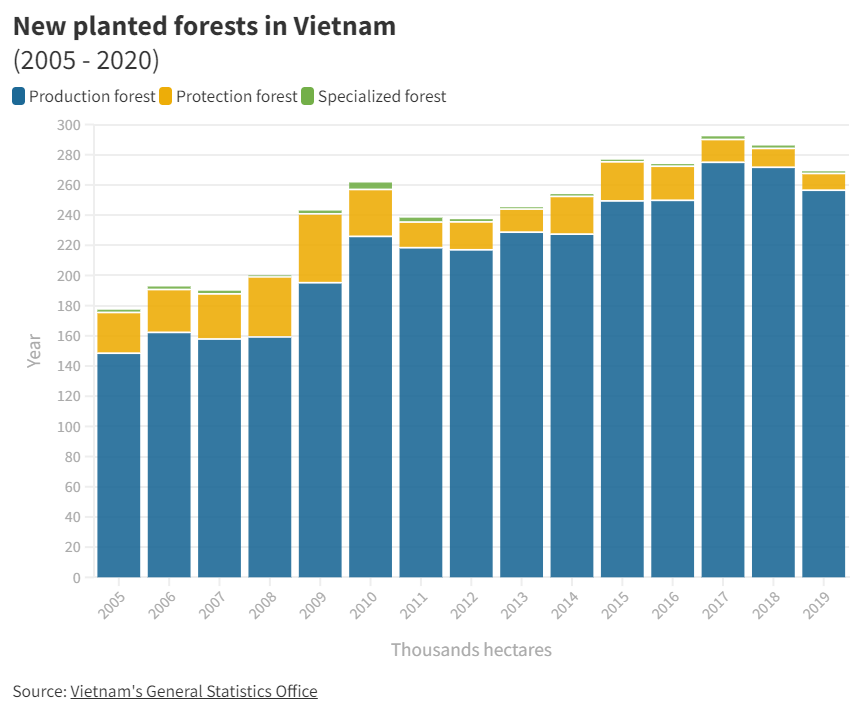
Notably, the indigenous communities adjacent to the area planned for the expressway may not benefit at all from afforestation. According to the Law on Forestry, afforestation may have to be located in another province, away from the original forest site, if the province that has lost its forest cannot arrange sufficient land.
“In the end, they [indigenous people] no longer have any forest canopy to protect them,” said Hong. “It takes hundreds of years to form a natural forest ecosystem – having money doesn’t mean you can just buy it.”
At COP 26 in Glasgow last year, PM Chinh announced that Vietnam was committed not only to net zero emissions by 2050 but along with Indonesia, became the second country in Southeast Asia to sign an end to deforestation by 2030.
According to Van of Lausanne University, in order to achieve the international commitments on sustainable development and green growth, Vietnam should not only stop at the compensation of forests which had been lost.
“Throughout all development decisions, the government needs to set a goal of ‘no deforestation and even to ‘ensure that forests have positive growth,” she said.
In June, UNESCO warned it would revoke Dong Nai’s Biosphere Reserve title if the Ma Da highway was approved. The Ministry of Transport has also petitioned the prime minister to reject the project because it “violates many laws,” and asked it to consider other options that do not go through the forest’s core.
While protected by the same legal and regulatory framework, forests in Vietnam have had different fates. The central government has yet to make the final decision regarding the Ma Da highway, but Dong Nai authorities have strongly defended its objections to the project. Ma Da is temporarily safe.
“It [Ma Da forest] is still intact thanks to the backing from multiple sides, especially from the provincial government. Not everywhere is as fortunate as we are,” said Trung while standing at a checkpoint in the forest. About 1km away, across the river in Binh Phuoc province’s territory, the natural forests are gone, replaced by vast rubber plantations.
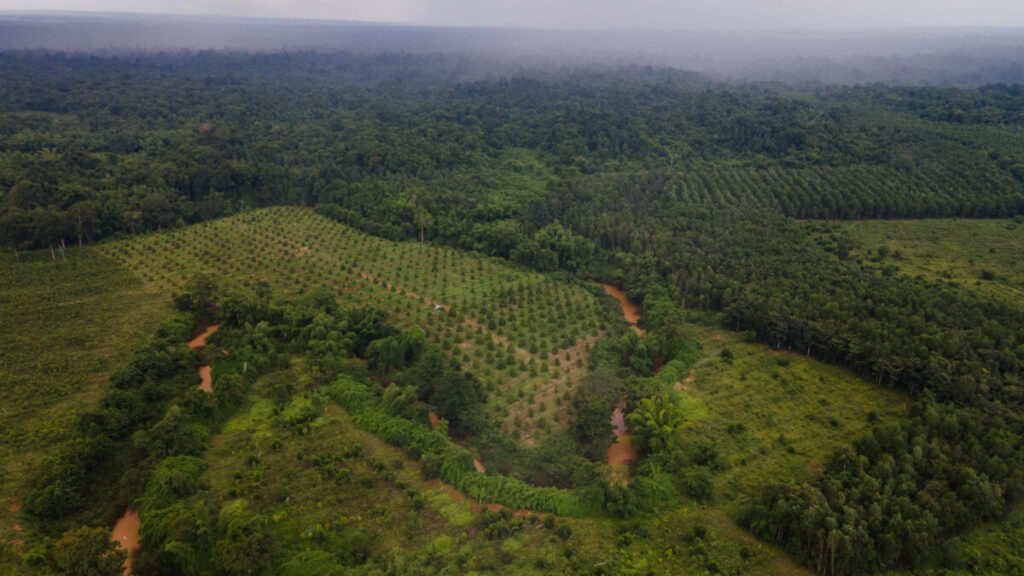
This story is supported by Internews’ Earth Journalism Network
All images were created by Thanh Nguyen, a photojournalist and photo editor currently based in Ho Chi Minh City, Vietnam. Thanh started his career in news photography in 2009 for Tuoi Tre newspaper until 2016, when he moved to VnExpress. For 10 years, Thanh has focused on documenting issues related to how people, culture and the environment have been affected by climate change across Vietnam.
| Ms. Nguyen Hai Van is currently a senior research fellow at the Institute of Geography and Sustainability of the University of Lausanne. She also serves as the Deputy Director of PanNature. |



